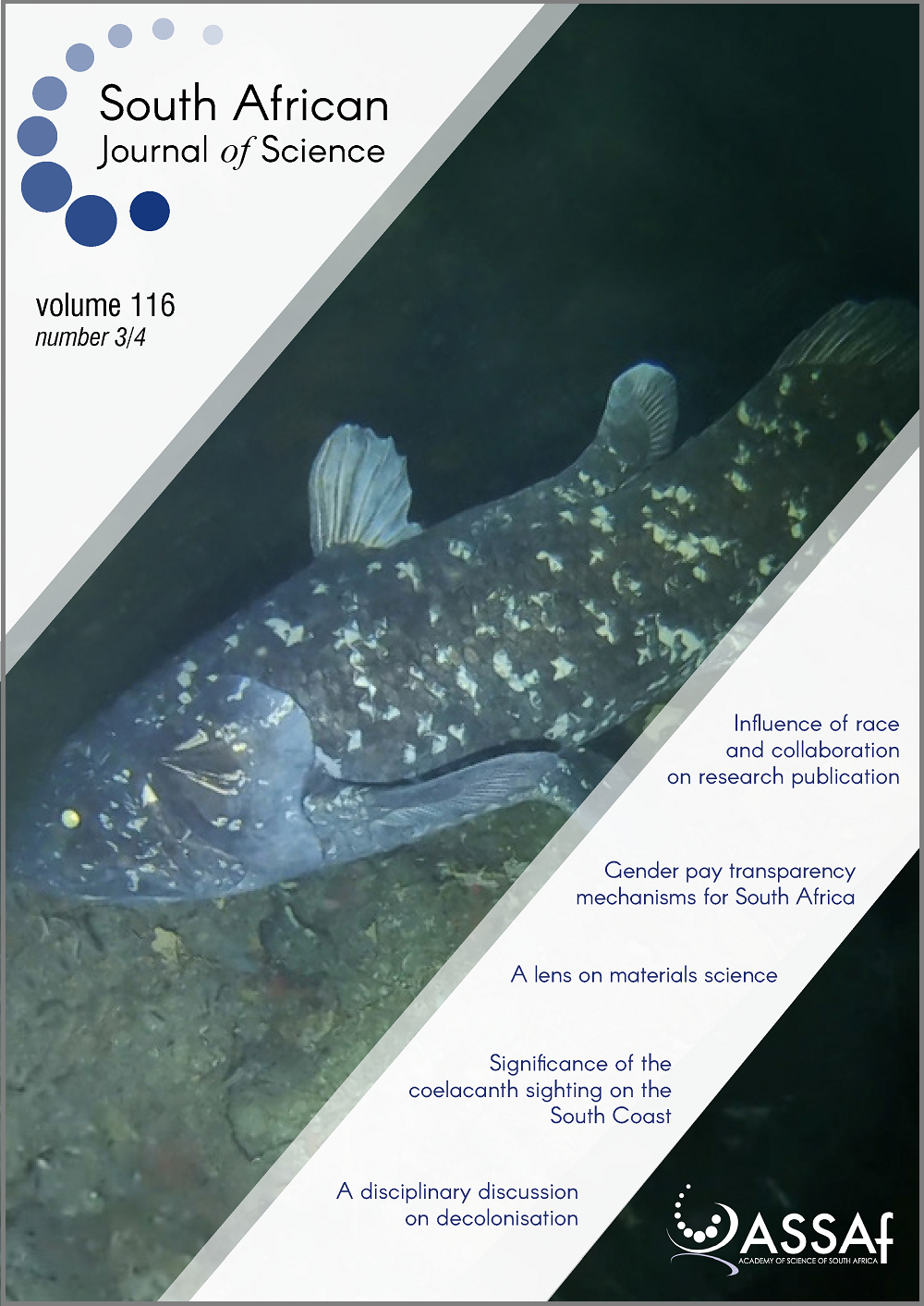Gender pay transparency mechanisms: Future directions for South Africa
DOI:
https://doi.org/10.17159/sajs.2020/6772Keywords:
women’s pay, gender wage gap, gender policyAbstract
The gender pay gap – that is, the difference in wages between men and women for the same or substantially the same work, or work of equal value – still features prominently as a stumbling block in achieving South African gender equality. If South Africa is to dislodge its stagnant gender pay gap, especially for women in the middle and upper levels of the wage distribution, pay transparency – making gender differences in wages known to employees, government and the public – can compel employers to remunerate fairly and equally. We undertook a comparison between the global and national mechanisms of gender pay transparency to propose a way forward to increase transparency in gender pay for South Africa. In addition to a discussion of existing mechanisms, a summary of the gender pay transparency mechanisms of 16 countries is provided as supplementary material to the article. We found that South Africa could strengthen legislated transparency mechanisms, especially with regard to pay reporting and pay audits, provided that sanctions are attached to non-delivery of these duties. Reigniting the debate on strengthening and improving South African legislation and interpretation of existing governance codes in relation to the implementation, monitoring and enforcement of gender pay transparency mechanisms could strengthen the existing collective bargaining framework and provide the impetus to demonstrate that South Africa sees gender equality as an achievable reality, not an improbable ideology.
Significance:
- Despite the presence of constitutional rights and enabling legislation to prevent workplace gender discrimination, South Africa continues to see a stagnant median gender pay gap of between 23% and 35%.
- This study provides a global analysis to reinvigorate the debate on how South Africa can strengthen transparency mechanisms to close the gender pay gap.
- Legislators, activists, board members, trade unions, academics, and organisational leaders are provided with suggestions on transparency mechanisms to improve efforts towards economic gender equality for South Africa.
Downloads
Published
Issue
Section
License

All articles are published under a Creative Commons Attribution 4.0 International Licence
Copyright is retained by the authors. Readers are welcome to reproduce, share and adapt the content without permission provided the source is attributed.
Disclaimer: The publisher and editors accept no responsibility for statements made by the authors
How to Cite
- Abstract 4606
- PDF 3201
- EPUB 352
- XML 520
- Supplementary Material 782












.png)